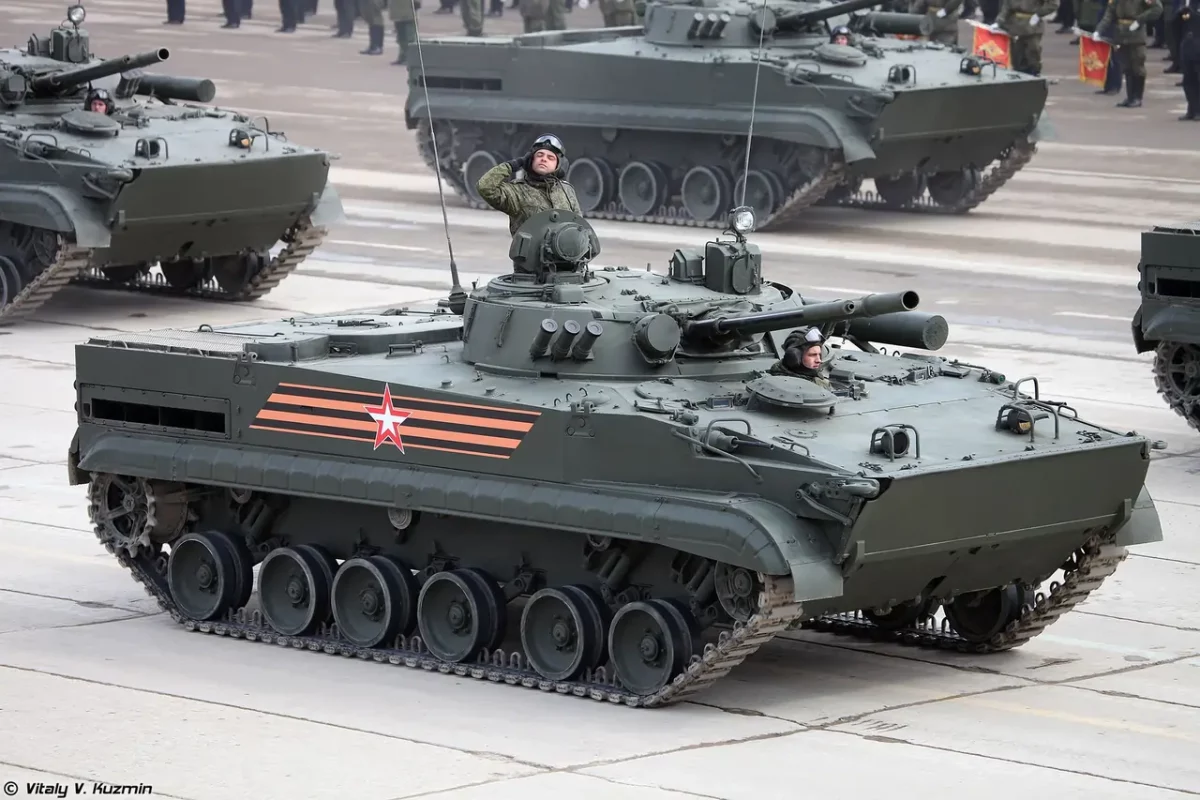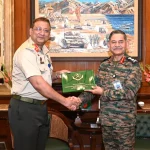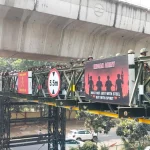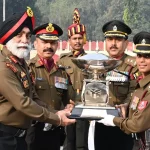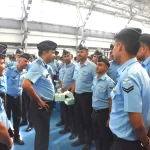Russia has proposed its upgraded BMP-3 Infantry Fighting Vehicle (IFV) to India, offering a modernisation package designed to boost protection, mobility, and firepower, while introducing semi-autonomous capabilities. The offer comes as the Indian Army seeks to replace its aging BMP-2 fleet and modernise its mechanised infantry.
The new BMP-3 variant incorporates modular explosive reactive armour (ERA), slat and grill armour to counter drones and loitering munitions, and self-sealing fuel tanks for enhanced survivability. A redesigned rear-mounted engine and hydro-mechanical transmission improve mobility and performance in high-altitude and desert conditions.
Advanced fire-control and observation systems with multispectral day-night sights and automated tracking allow simultaneous engagement of multiple targets, improving effectiveness against infantry, light armour, and fortified positions. The tri-calibre armament system—100mm gun, 30mm cannon, and 7.62mm machine gun—remains, now with options for laser-guided anti-tank missiles.
The upgraded platform can also integrate AI-assisted semi-autonomous operations, including automated navigation, threat detection, and fire control support, aligning with global trends in combat vehicle automation.
India’s mechanised infantry modernisation is already underway through the BMP-2M upgrade programme, enhancing 693 vehicles with DRDO- and BEL-designed night sights, electro-optical systems, and improved fire-control capabilities. Simultaneously, the Futuristic Infantry Combat Vehicle (FICV) project continues, aiming to deliver a fully indigenous, modular, and AI-enabled IFV under the Atmanirbhar Bharat initiative.
While adopting the Russian BMP-3 could provide an immediate combat-ready solution, it presents logistical challenges, including separate maintenance and supply chains. India will weigh the advantages of rapid operational readiness against long-term strategic goals of indigenous production, technology absorption, and defence self-reliance.
The final decision on the BMP-3 offer will significantly influence India’s armoured vehicle modernisation strategy for the next two decades, balancing operational pragmatism with industrial sovereignty.

